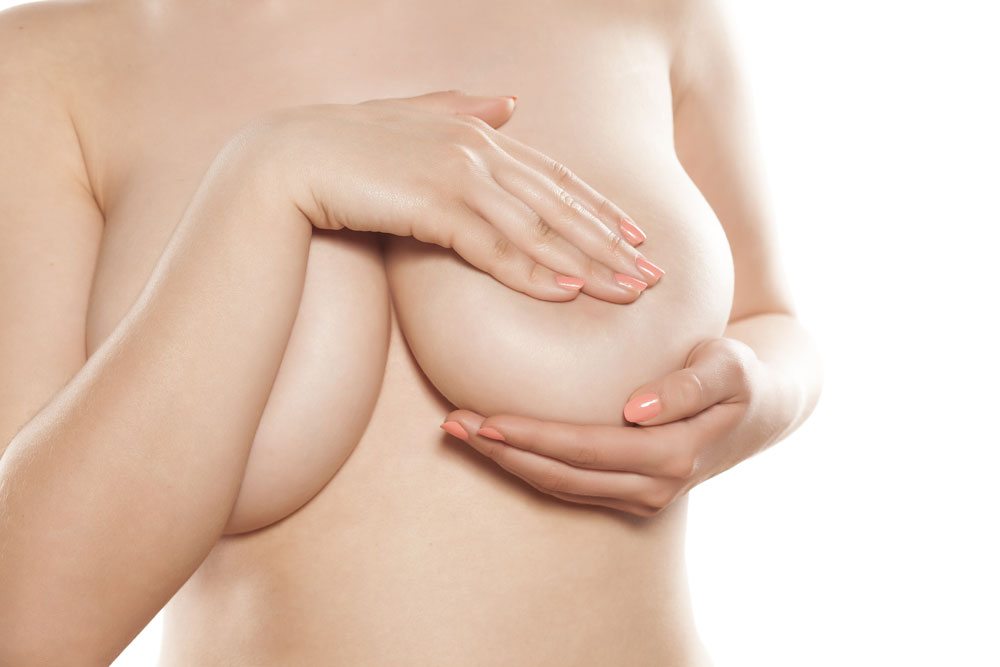Ever wondered how breast liposuction scars can affect your natural skin tone and confidence reduction? You’re not alone. Many people worry about the visible breast reduction scars change and natural skin level breast reduction scars left after the procedure. This blog post dives into what breast reduction patients need to know about these scars, offering practical tips and expert advice on minimizing their appearance after a traditional breast reduction or scarless breast reduction procedure. We’ll explore the healing process, visible scars, traditional breast reduction scar treatment options, and what to expect long-term.
Understanding breast liposuction scars helps you make informed decisions and sets realistic reduction expectations. Whether you’re considering the procedure or already had it done, this guide provides valuable insights for breast reduction patients about the scar healing process and visible scars to ease your concerns. Get ready to learn everything you need to manage and reduce those scars effectively for breast reduction patients, including scarless breast reduction techniques.
Key Takeaways
-
Understand Scar Types: Different incision methods used in breast reduction can lead to various scar types and appearances.
-
Scar Evolution: Scars change over time, often becoming less noticeable as they mature, typically over a year, similar to the results seen in scarless breast reduction.
-
Minimize Visibility: Techniques like silicone sheets, proper wound care, and avoiding sun exposure can help reduce scar visibility in scarless breast reduction.
-
Choose the Right Surgeon: Selecting an experienced surgeon is crucial for minimizing scars and ensuring optimal healing in scarless breast reduction.
-
Manage Complications: Be aware of potential complications like hypertrophic scars or keloids after breast reduction and know how to manage them effectively.
-
Follow Healing Protocols: Adhering to recommended healing processes and scar care techniques after breast reduction is vital for achieving the best cosmetic results.
Understanding Breast Reduction Scars
Natural Response
Breast reduction scars are the body’s natural response to healing after surgery. The body forms scar tissue to close wounds. This is an essential part of the recovery process.
Inevitable Scarring
Scars are an inevitable part of breast reduction surgery. They can vary in size and visibility. Different factors like skin type, genetics, and surgical technique affect the appearance of a breast reduction scar.
Realistic Expectations
Setting realistic expectations is important. Most patients will have some visible scarring. These scars from breast reduction may fade over time but rarely disappear completely.
Common Locations
The most common breast reduction scars appear around the nipple, vertically down to the breast fold, and along the breast fold itself. These are typical patterns for many breast reduction procedures.
Healing Process
Healing tissue breast reduction scars change over time. Initially, they may look red or raised. With proper care, breast reduction scar can flatten and lighten in color. This process can take several months to a year.
Scar Minimization
Surgeons aim for minimal breast reduction targets for scars. Techniques include placing incisions in less visible areas and using meticulous stitching methods for breast reduction scar.
Sun Exposure
Direct sunlight can worsen breast reduction scars. Protecting the area from sun exposure is crucial. Sunscreen and protective clothing help prevent darkening of scars.
Alternative Treatments
There are alternative treatments for reducing scar visibility:
-
Silicone sheets
-
Laser therapy
-
Steroid injections
These treatments can help improve the appearance of scars.
Emotional Impact
Scars can have an emotional impact on individuals. It’s normal to feel self-conscious about them initially. Support groups and counseling can provide emotional support during breast reduction recovery.
Scar Types and Appearances
Color Changes
Scars from breast liposuction can vary in color. Initially, they may appear pink or red. Over time, these colors can change. For some people, scars may turn brown or darken further. Skin tone plays a significant role in these changes. Darker skin tones often result in darker scars.
Risk Factors
Several factors influence scar prominence. Genetics is one of the primary factors. If family members have prominent scars, there’s a higher chance you might too. Skin tone also affects scarring. People with darker skin tones are more prone to noticeable scars. The body’s healing process varies from person to person.
Thin Line Scars
Thin line scars are usually less noticeable. They often form as a straight line on the skin’s surface. These scars are common after minor incisions. On the breast, thin line scars might be hidden around the nipple area or beneath the breast fold.
Raised Scars
Raised scars are more visible than thin line scars. They occur when the body produces excess collagen during healing. These raised areas can feel firm and may be sensitive to touch. Raised scars often appear on areas of high tension, such as the upper part of the breast.
Common Locations
Breast liposuction scars typically form in specific areas. The most common locations include:
-
Around the nipple
-
Under the breast fold
-
Along the side of the breast
These locations help hide the scars naturally due to skin folds and natural contours.
Scar Evolution and Timeline
Initial Phase
Scars from breast liposuction are initially red and raised. This phase lasts for about 2-3 weeks. The skin may feel tender and itchy. Redness is common as the body starts healing.
1-3 Months Post-Surgery
The scars begin to change color. They shift from red to a lighter pink hue. The tenderness and itchiness start to reduce. This period is crucial for proper scar care.
3-6 Months Post-Surgery
Scars continue to lighten in color. They become flatter and less noticeable. Any remaining itchiness usually fades away. It’s important to keep the scars moisturized.
6-12 Months Post-Surgery
By this time, scars have matured significantly. They may turn white or match the surrounding skin tone. Their texture becomes smoother. Most patients notice a significant improvement.
Long-Term Transformation
Over one to two years, scars can become nearly invisible. Proper care during the early stages helps achieve this result. Some factors like genetics, skin type, and sun exposure can affect the final appearance.
Impact of Incision Methods
Vertical Incision
The vertical, or “lollipop,” incision method results in fewer scars. Surgeons make a circular cut around the areola and a straight line down to the breast crease. This method leaves a scar that is less visible under clothing.
Scarring tends to be minimal with this technique. The vertical pattern helps reduce the risk of noticeable marks. Patients often prefer this method for its subtle scarring.
Inverted Incision
The inverted, or “anchor,” incision involves more extensive cuts. It includes three parts: around the areola, vertically down to the breast crease, and along the breast fold. This results in an anchor-shaped scar.
This method produces more visible scars due to the longer incisions. However, it allows for greater reshaping of the breast tissue. Surgeons may choose this approach for patients needing significant adjustments.
Scar Size and Pattern
The choice of incision influences scar size and pattern. Vertical incisions result in smaller, less complex scars. They are often chosen for minor adjustments.
Inverted incisions create larger, more complex scars. These patterns offer better access to breast tissue, allowing for major reshaping. The trade-off is more noticeable scarring.
Surgeon’s Role
Surgeons play a crucial role in selecting the incision method. They consider factors like breast size, shape, and patient preferences. Surgeon expertise ensures optimal outcomes by choosing the right technique.
Individual patient factors also influence decision-making. Surgeons assess skin elasticity and healing capacity. These assessments help determine which incision will yield the best results with minimal scarring.
Complications and Management
Keloid Scars
Keloid scars can form after breast liposuction. These scars grow beyond the original incision site. They appear thick, raised, and can be darker than the surrounding skin. Keloids are more common in people with darker skin tones.
Hypertrophic Scars
Hypertrophic scars also form after surgery. Unlike keloids, they do not extend beyond the incision site. They are raised but tend to flatten over time. These scars can be red or pink and may feel firm.
Differences Between Keloid and Hypertrophic Scars
Keloid and hypertrophic scars have differences. Keloids grow larger than the original wound, while hypertrophic scars stay within the wound’s boundaries. Keloids may require more aggressive treatment. Both types can cause discomfort and itchiness.
Medical Interventions
Several medical treatments exist for raised scars. Steroid injections can help reduce inflammation and flatten scars. Laser therapy is another option that can improve scar texture and color. In some cases, surgical removal of the scar may be necessary, but this carries a risk of recurrence.
Home Care Practices
Home care can also manage raised scars. Silicone sheets or gels can be applied to the scar to keep it hydrated and reduce its appearance. Pressure garments might help flatten the scar over time. Moisturizing products containing vitamin E or aloe vera can soothe the skin.
Early Detection
Early detection of scar complications is crucial. Identifying raised scars early allows for prompt treatment, which can minimize their long-term visibility. Regular check-ups with a healthcare provider can help monitor scar development.
Importance of Treatment
Treating scars early prevents them from becoming more prominent. It also reduces discomfort and improves cosmetic outcomes. Patients should follow their doctor’s advice on post-surgical care to achieve the best results.
Minimizing Scar Visibility
Preventive Measures
Applying silicone sheets or gel can help reduce scar prominence. Silicone is known to improve the appearance of scars. It hydrates the skin and regulates collagen production.
Patients should start using silicone sheets or gel as soon as their wounds heal. This usually occurs within two weeks post-surgery. Consistent use for at least three months shows the best results.
Lifestyle Adjustments
Lifestyle adjustments post-surgery support better healing and less noticeable scarring. Staying hydrated is crucial. Water helps maintain skin elasticity.
Avoid smoking, as it impairs blood flow and delays healing. Also, eat a balanced diet rich in vitamins A and C. These nutrients promote skin repair.
Limit sun exposure to the operative scars. UV rays can darken scars, making them more visible. Using sunscreen with high SPF protects the skin.
Professional Treatments
Professional scar treatment options offer improved cosmetic outcomes. Laser therapy is one such option. It works by removing damaged skin layers.
Laser treatments stimulate collagen production. This helps blend scars with natural skin tone over time. Patients may need multiple sessions for optimal results.
Chemical peels are another option. They exfoliate the top layers of skin, reducing the appearance of scars. Consult with a dermatologist to determine the best treatment plan.
Healing Process and Duration
Immediate Recovery
The first stage of the scar healing process starts immediately after surgery. The body begins to repair the incision sites. Swelling and bruising are common. This phase lasts about two weeks. Rest is crucial during this time.
Early Healing
From two to six weeks post-surgery, the scars begin to form. The incisions start to close. Redness and firmness around the scars are typical. Patients should follow all post-operative care instructions closely. Proper wound care helps prevent infection.
Intermediate Healing
Between six weeks and three months, scars enter an intermediate phase. They may appear raised and darker in color. This is normal as collagen builds up in the area. Avoiding sun exposure is important. Sun can darken scars permanently.
Scar Maturation
Scar maturation occurs from three months to a year after surgery. Scars gradually flatten and fade during this period. They become less noticeable over time. Patience is key as the body continues to heal.
Factors Influencing Healing
Several factors can affect the speed and quality of scar healing:
-
Nutrition: A balanced diet rich in vitamins and proteins supports healing.
-
Smoking Status: Smoking impairs blood flow and slows down recovery.
-
Post-Operative Care: Adhering to care instructions is essential for optimal results.
Scar Care Techniques
Gentle Massage
Gentle massage can help reduce scar tissue. It improves blood flow and breaks down the hardness of scars. Use circular motions with your fingers. Do this for about 10 minutes daily.
Massage helps to soften the scar. It can also make the scar less noticeable over time. Be careful not to press too hard.

Moisturization
Keeping the scar moisturized is crucial. Use lotions or creams recommended by your doctor. These products keep the skin hydrated and promote healing.
Moisturizers can prevent itching and dryness. They also help reduce the size and look of scars.
Sun Protection
Protecting your scars from the sun is essential. Sun exposure can darken scars and make them more visible. Use sunscreen with a high SPF.
Wear protective clothing over the scarred area when outside. Hats and long sleeves can help shield scars from UV rays.
Follow-Up Visits
Regular follow-up visits with your surgeon are important. They provide personalized advice for scar management. Surgeons can suggest specific scar reduction treatments based on your progress.
These visits allow doctors to monitor healing. They can recommend adjustments to your care routine if needed.
Scar Reduction Treatments
Several treatments can help minimize scars. Laser therapy is one option. It targets scar tissue and promotes smoother skin.
Silicone sheets or gels are also effective. They hydrate the skin and flatten scars over time.
Scar Removal Procedures
For severe scars, surgical options exist. Scar revision surgery involves removing damaged tissue and stitching the area carefully. This procedure aims to improve the appearance of deep or wide scars.
Consult with a specialist to determine if this option is suitable for you.
Role of Nutrition
Good nutrition supports skin healing. Foods rich in vitamins A, C, and E are beneficial. They promote collagen production and skin repair.
Drink plenty of water to stay hydrated. Proper hydration aids in faster recovery.
Choosing Your Surgeon
Board-Certified Experts
Selecting a board-certified plastic surgeon is crucial. They have the necessary training and credentials. Certification from the American Board of Plastic Surgery ensures they meet high standards.
Experienced surgeons understand breast reduction surgery well. They know how to minimize scars and achieve the best results. Researching their qualifications can provide peace of mind.
Before-and-After Galleries
Reviewing before-and-after galleries is important. These photos show previous patients’ results. They help you see what to expect from the procedure.
Look for images that match your body type. Pay attention to scar placement and healing. This can give you a realistic idea of potential outcomes.
Consultation Discussions
A thorough consultation is essential. Discuss your expectations about scars with the surgeon. Ask about different surgical techniques they use.
e techniques may result in less noticeable scars. Surgeons can explain options like incisions around the areola or under the breast fold. Knowing these details helps in making informed decisions.
Post-Operative Care
Post-operative care impacts scar appearance. Surgeons should provide detailed instructions for aftercare. Proper care can enhance healing and reduce scar visibility.
Ask about recommended products and treatments for scars. Silicone sheets, gels, and massages are common suggestions. Following these guidelines can improve your results.
Clinic Environment
The clinic environment matters too. Choose a clinic with a clean and professional setting. A well-maintained clinic reflects the quality of care you will receive.
Visit the clinic beforehand if possible. Meet the staff and observe their interactions with patients. A welcoming and supportive environment can ease anxiety about the surgery.
Summary
Breast liposuction scars can be a concern, but understanding them helps you manage expectations and care. Different scar types evolve over time, influenced by incision methods and healing processes. Complications are rare but manageable with proper care.
Choosing the right surgeon and following recommended scar care techniques are crucial. Prioritize your healing process and minimize visibility with expert advice. Ready to take the next step? Consult a specialist to ensure the best results for your breast liposuction journey.
Frequently Asked Questions
What types of scars can result from breast liposuction?
Scars can vary but typically include fine lines, keloids, or hypertrophic scars. The appearance depends on skin type and healing.
How long does it take for breast liposuction scars to heal?
Initial healing takes about 6 weeks. Full scar maturation can take up to a year.
Can the choice of incision method impact scar visibility?
Yes, smaller incisions generally lead to less noticeable scars. Discuss options with your surgeon.
Are there complications associated with breast liposuction scars?
Complications like infection, poor healing, or excessive scarring can occur. Proper care minimizes risks.
How can I minimize the visibility of my scars?
Use silicone sheets, keep the area moisturized, and avoid sun exposure to reduce scar visibility.
What are effective scar care techniques post-surgery?
Regularly apply prescribed ointments, massage the area gently, and follow all aftercare instructions provided by your surgeon.
Why is choosing an experienced surgeon important for minimizing scars?
An experienced surgeon uses advanced techniques that reduce scarring and improve overall results.





